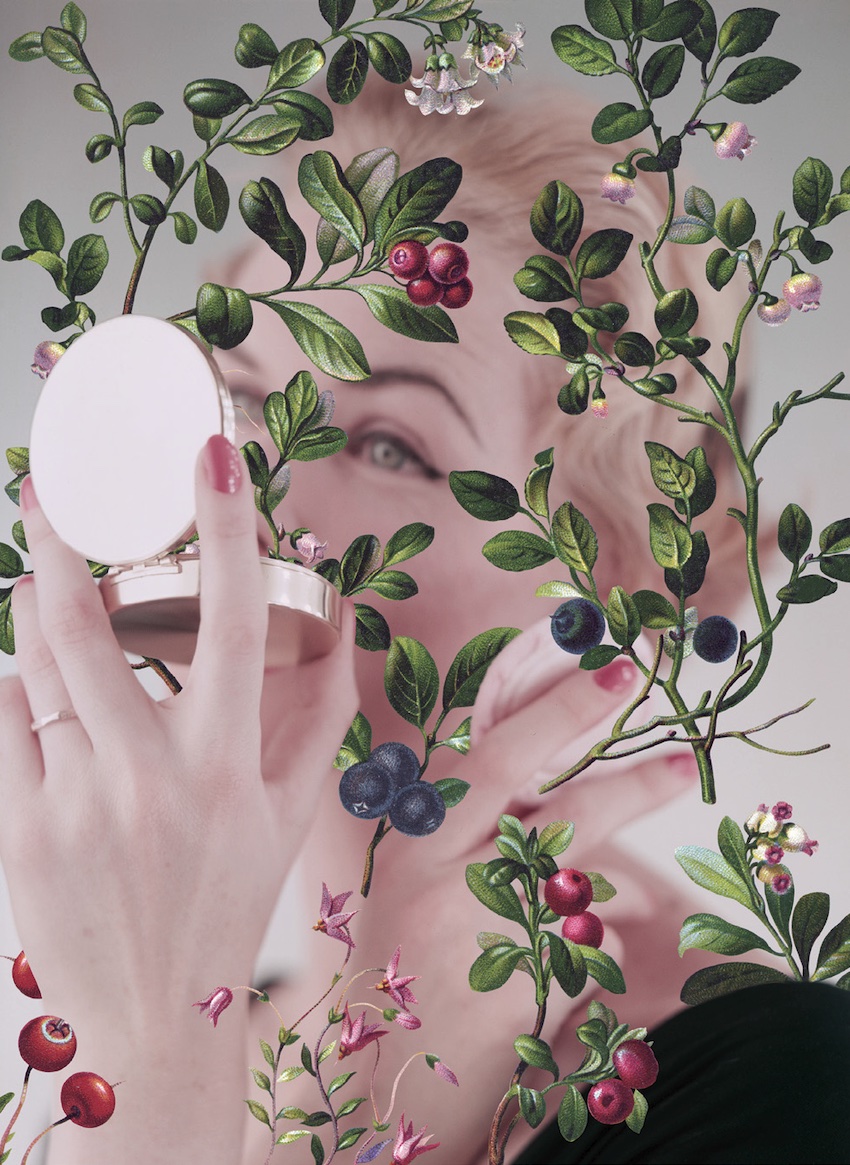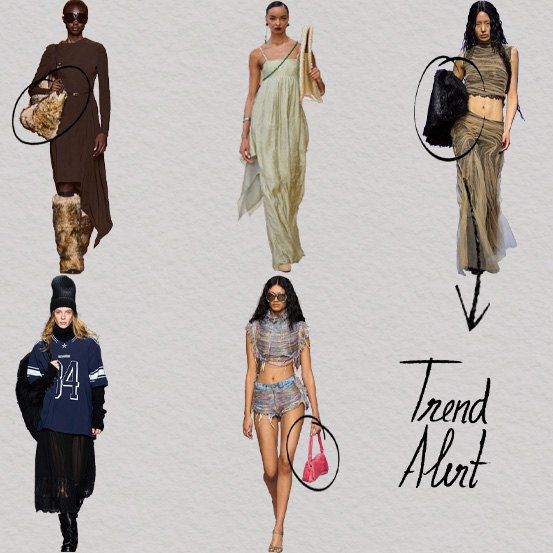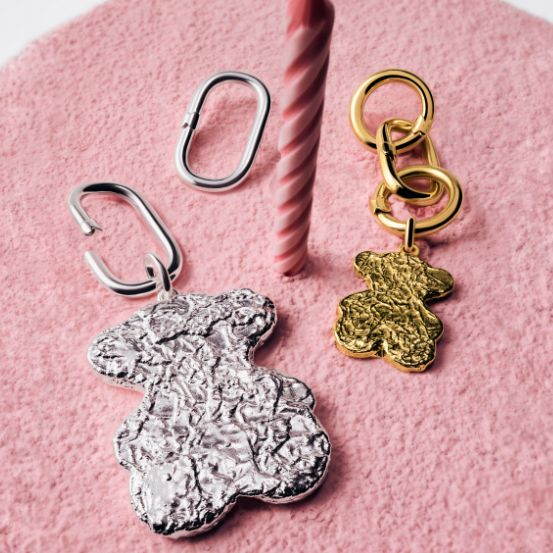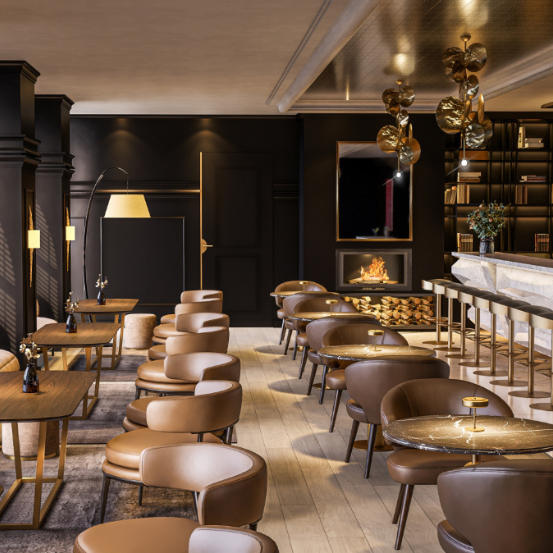Artwork by João Oliveira
Alongside their nostalgic narrative, the chemistry of ancestral ingredients has given rise to a new segment in cosmetics. Ancestral beauty is a trend with ever deeper roots and loving what Nature gives us has never been this modern.
It's 1963, the year the movie ‘Cleopatra’ is released. Actress Elizabeth Taylor introduces the historic bath of the Queen of Egypt to the world. It wasn't just any bath: a good example of how reality surpasses fiction. It is said that Cleopatra owned more than 700 donkeys to produce the milk to which she then added oils, spices and cereals for her skincare and relaxation routine. The mixture of lactic acid - an exfoliating hydroxy acid found in milk - and thymoquinone - a powerful antioxidant found in black seed oil - was the ideal recipe for soft, radiant skin. Fast forward to today and almost nothing has changed. We're becoming bigger fans of ancestral ingredients and nature never lets us down. From Egyptian black seed oil, to Indian turmeric and Turkish rose water, beauty products that date back centuries or millennia are gaining popularity - again. The history of cosmetics goes hand in hand with the history of humanity. For thousands of years, human beings have used nature as a unique source of raw materials and created mixtures of ingredients of plant, mineral and animal origin to obtain cosmetics that guarantee protective, beautifying or even spiritual functions. It wasn't until the 20th century that synthetic and chemically modified ingredients became universally used in cosmetics, and innovation in this market brought us, for example, urea, retinol or peptides. Despite the futuristic appeal of countless ingredients currently used in the cosmetics industry, more and more people are interested in ancient, natural ingredients with an unshakable historical reputation. And in this world of beauty, with its focus on nature and social equity, the natural ingredients of Cleopatra's rituals continue to be great sources of inspiration. Today, we are experiencing a revival of ancestral beauty: that which we hope will bring us some of the peace and authenticity of the past in these frenetic, technological days. The modern relevance of ancient beauty is real, but why so?
Innovations in the field of cosmetics are constant and aim to respond to our hedonistic desires, which are increasingly valued from an emotional and economic point of view. The growing popularity of ancient and holistic practices - such as Indian Ayurveda or Traditional Chinese Medicine - both in the world of beauty, nutrition and well-being, reflects the current relationship we seek to have with our physical, mental and social health, in a cross-cultural understanding of what it means to be well. These ancient practices aim to prevention and healthy longevity, and call for a more inclusive and harmonious approach, giving the opportunity to get to know and learn about other cultures with less representation in the Western world. This exploratory attitude to the past is also related to the fact that women are increasingly taking charge of their own narrative of beauty.
The pandemic has given us access to real people with beauty "secrets" from all over the world; it has also promoted small local businesses, many of them set up by women from minority cultures. There have several brands inspired by ancestral beauty have emerged and grown, by the hands of black and indigenous women who legitimately recover the ancestral knowledge and rituals, and promote the celebration of their cultures. Many of these brands give work to their communities and the focus goes beyond being natural or organic, and rises to a higher purpose that resonates very well in today's society. Culture survives through representation, not appropriation. We want to belong to a close and authentic community that represents us, in which trust is established and from which there is something to learn from, but also to teach. In a saturated and mature cosmetics market, with promises that are often exaggerated, looking to the ancestral wisdom of ingredients from the earth and nature, and ancient ritualistic practices, offers the comfort of an alternative rooted in a legacy validated by time.
There has been such an acceleration in science and technology that for decades we have forgotten the simple rituals that have always worked and continue to work. Neuroscience and biohacking validate that we do need them and are increasingly aware of this, but we want them with a modern twist. We value ancestral ingredients, but we want to feel a breath of fresh air in the communication of the brands that use them in their products, worked on by modern marketing that gives them a cooler, fresher and more up-to-date image. We also want them to be transparent about the history of these ingredients and brands, whether they belong to culture or not. These practices predate the Anthropocene era, when man's impact on the earth surpassed that of nature. Our cosmetics must reflect and respond to our needs: beauty for ourselves, for others and for the planet, and rituals that soothe us and promote conscious connection to full well-being. This is ancient wisdom in modern times, helping people to live more consciously, for themselves and for the planet. Between community building and sustainable progress, there is no room for disruption: the delicate balance between protection and innovation will turn us all into archivists, and brands that combine cutting-edge technology with natural ingredients communicate a very strong message that is totally in line with the expectations of today, not only in terms of formulation, but also in terms of packaging and, of course, storytelling. This desire to bring a narrative to the brands has been visible at various points of contact, particularly through the choices of their ambassadors. Youth standards are still too young. Ageism is perhaps one of the last few prejudices that go unnoticed in society. In the beauty industry, as in fashion - always disruptive and pioneering - we see more and more brands bringing people over the conventional age to their contexts.
One of the most emblematic ingredients of ancient cosmetics is bakuchiol. Bakuchiol is found mainly in the seeds of the Indian plant Psoralea corylifolia and is widely used in Indian and Traditional Chinese Medicine. The seeds contain compounds such as flavonoids, mainly antioxidants, and coumarins, with anti-inflammatory and antibacterial properties, which is why it is widely used in cosmetics for acne and skin ageing, particularly firming, anti-wrinkle and anti-dark spot products. Although retinol and bakuchiol have no structural similarities, they have a similar gene expression profile, especially in some key genes and proteins associated with ageing, which justifies their constant comparison, to the point where we call it "natural retinol." Bakuchiol, unlike retinol, has excellent photochemical and hydrolytic stability, a good safety profile and ease of application which makes it a star in natural cosmetics. Its tolerance by the most sensitive skins has certainly contributed, to retinol's bad reputation, but retinol, like many of the ingredients that laboratory synthesis has brought us, is highly effective and has proven its performance and safety.
Retinol, the gold standard in anti-wrinkle and firming action, belongs to a family of compounds known as retinoids and its history dates back to ancient Egypt. Retinol was first isolated in the 1930s, but only made its way into cosmetics in the 80s. Despite being more than forty years old, this ingredient is very new when compared to those that belong to ancient cosmetics, and it is still under scrutiny in society. The data we have on its undisputed efficacy is due to studies carried out unethically by various scientists, namely by A. Kligman, both on animals and human volunteers. It won't be unique, but this is not at all the reality of cosmetics today. Even so, we often associate natural cosmetics with a greater ethical awareness and can therefore fall into the temptation to demonize what doesn't belong there. Taking advantage of its kind aura, we should always encourage a healthy coexistence between the two origins of the ingredients, and this is what we often see, fortunately. Brands that were born with ancestral DNA coexist on the market, while others incorporate it organically into their portfolios. When intracultural becomes intercultural, it's important to participate with intention and never erase the original framework.
The perfect blend of tradition and modernity: tea. Considered the world's oldest ancestral remedy, tea was discovered thousands of years ago in China, and today 2 billion cups are consumed on the planet every day. Tea may be an ancient ingredient, but its revival in cosmetics is serving this new holistic appeal. According to Future Market Insights, sales of tea-based cosmetics are expected to increase by 8.3% by 2033, while data intelligence platform Spate has recorded specific growth for black tea - Camellia sinensis - of 13.2% by the end of 2023 in the USA. Green tea, matcha and black tea, as well as their fermented derivative, kombucha, are inexhaustible sources of antioxidants and have relevant actions on acne and photoaging, for example. Many cosmetics brands are even expanding their portfolio to include ingestible teas, such as Tata Harper's Flourish Like a Flower Herbal Beauty Tea. And Tatcha, one of the best examples of J-Beauty today, has just launched a new matcha-based cleansing gel for oily skin. Teaology Tea Infusion Skincare is perhaps the most redundant example of celebrating this ingredient in cosmetics, as it is a brand that has replaced the water used as a solvent with tea.
Cosmetics are not applied in a sterile environment and there are many techniques and tools that draw on this ancestral care philosophy: gua sha, stone roller, body brushing brushes, tongue scraper, facial yoga, are great complementary practices where success is achieved by being consistent. Not everything about ancient beauty is validated by science, but Einstein advised us to look deeply into nature to better understand everything. The future of beauty is naturally inspired by the past. Reconnecting with nature is integral to a happier and more beautiful life, and as much as technology is essential in our lives and makes the world a small place, nature has been the best of laboratories for humans: one where everything happens and equipped with best resources, including us.
Translated from the original on Vogue Portugal's Mother Nature issue, published May 2024. Full stories and credits in the print issue.
Relacionados
.jpg)



.jpg)

.jpg)

